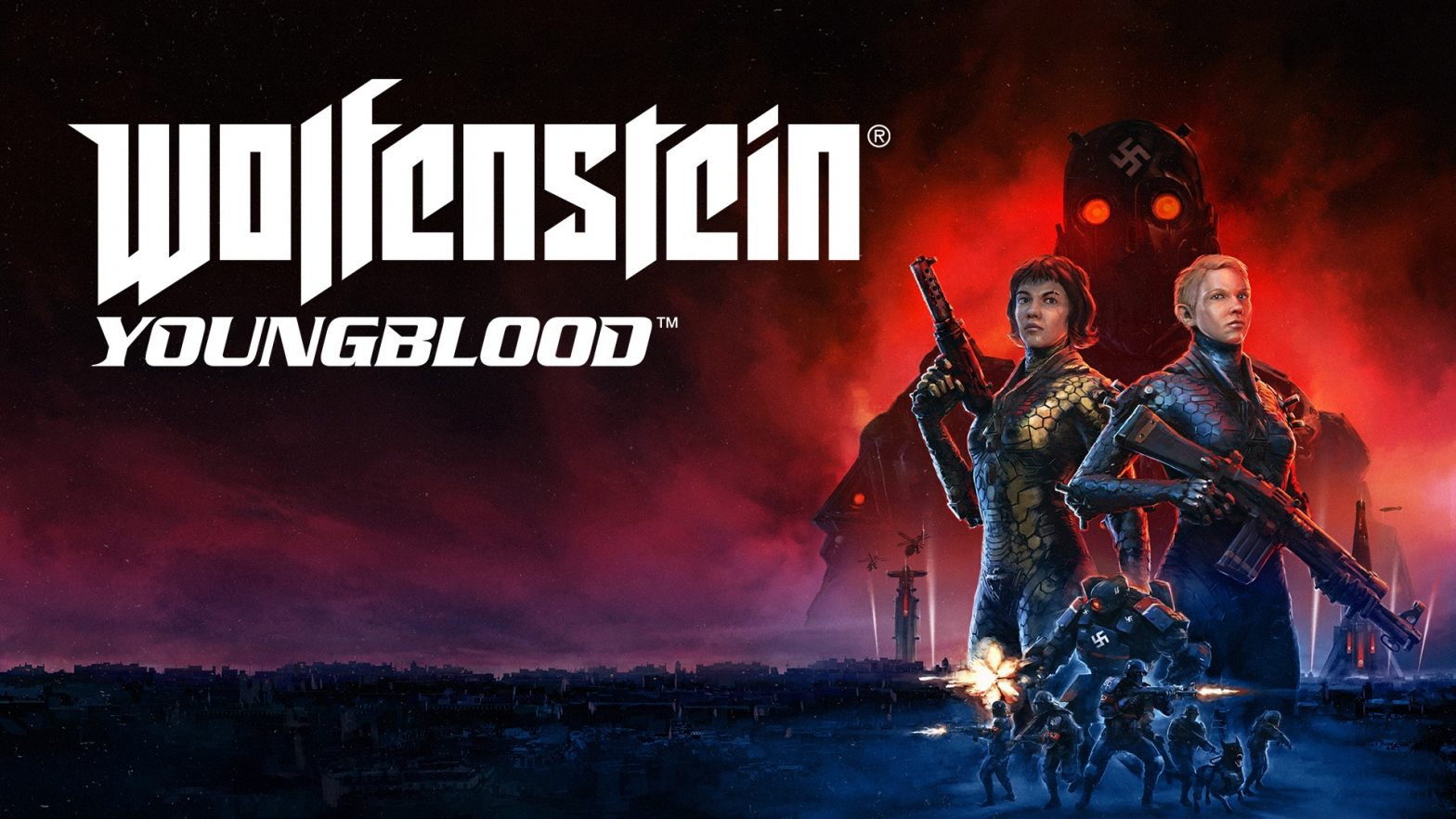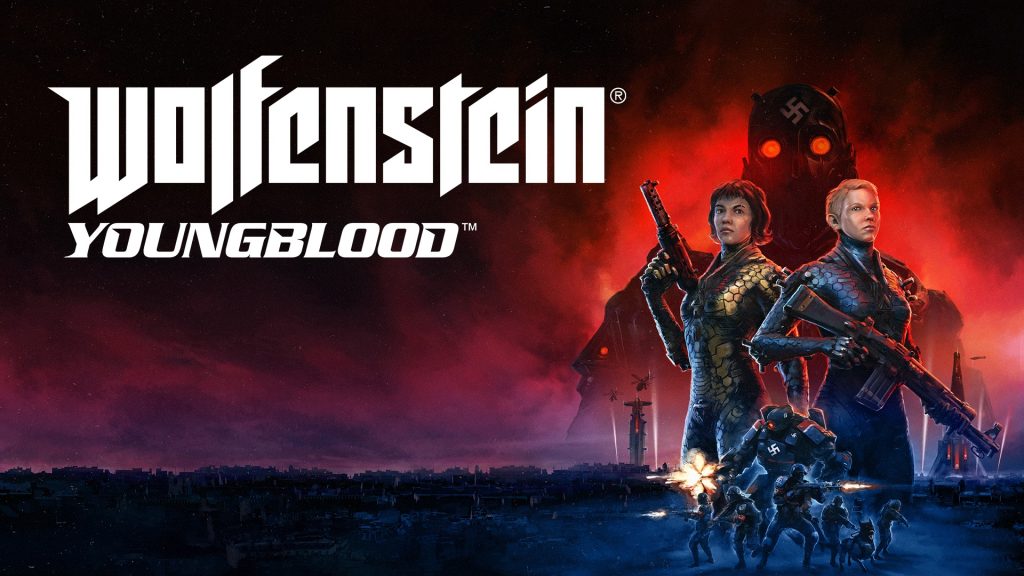
This article originally ran under a different banner/website in September of 2019 and is now being here re-uploaded for purposes of convenience and consolidation. Please enjoy.
LADIES AND GENTLEMEN!!! MY LOYAL FOLLOWERS!!! If you were to ask me, The Video Game Doomsayer, if I recall a single-player game series that decided to torturously crowbar in multiplayer feature to justify inserting Farmville-styled microtransactions, my thoughts immediately go to dark reserves of my mind that contains my few memories of Dead Space 3. An experience so bad that it caused EA to put the series in cryogenic status for the rest of eternity. So when Bethesda announced Wolfenstein: Youngblood, a co-op shooter in a game series that was originally a single player, alarm bells started to wail in my head. Those same alarms shrieked even louder when the news that the ability to purchase Nazi gold to buy in-game cosmetics reached my tired ears. The final cherry on top came out of a support character’s mouth when they said I would need to grind up before taking on the big boy Nazi generals. At that point, I knew the live service plague had claimed the Wolfenstein series.
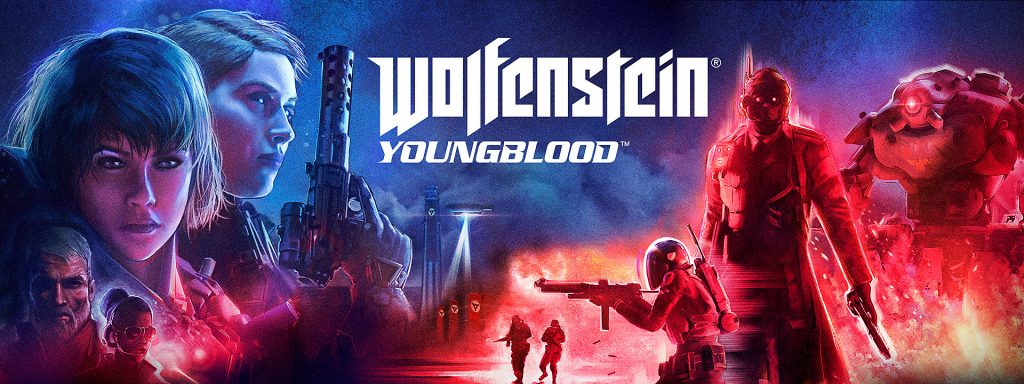
Now, many people have heard me cry ad nauseam the end is nigh due to live services, but what is this blight that has swarmed over the media? A live service game is considered to be a game that is continuously ongoing, will either update with new content or events, design to drive player engagement. Publishers have figured out that having players consistently engaging with their game increases the chances of breaking down player’s mental fortitude to get them to engage with the game’s microtransactions. Now I criticize live services all the time, but I don’t think the concept is all folly. My gripe stems from how egregious the microtransactions are and how every publisher is abandoning games they are known for to Frankenstein a live service from their IP. No other publisher demonstrates this point better than Bethesda as they shy away from single-player narrative-focused games in exchange for live services like Fallout 76 and Wolfenstein: Youngblood. Today I will be autopsying Wolfenstein: Youngblood to expose how the live service model caused this title to rot from the inside out.
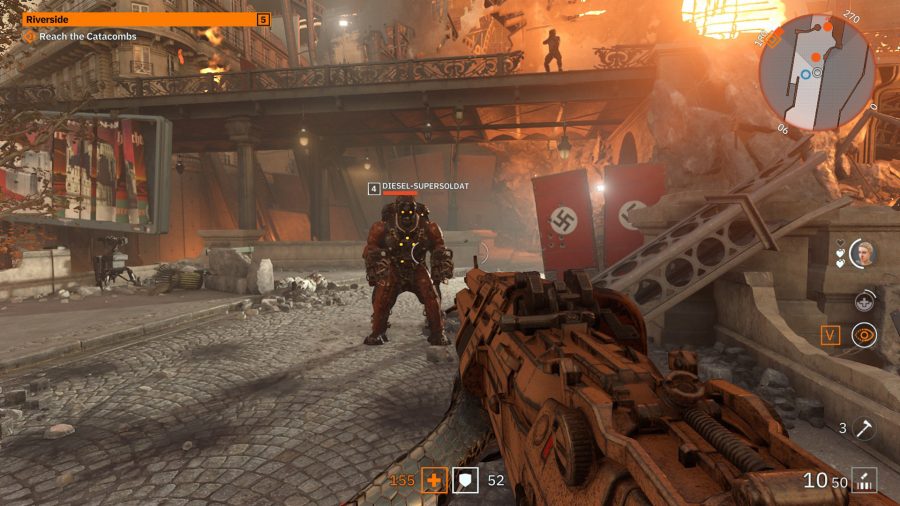
Our story begins nineteen years after the events of Wolfenstein II, BJ Blazkowicz has disappeared from his Texan home. With word of BJ last seen in Nazi-occupied Paris, his twin daughters, Jess and Soph, decide to rescue dear old Dad. With a super hacker, two super suits, and an FBI helicopter, they venture to Paris and hook up with the Paris Resistance. The Resistance believes that BJ has gone to a Nazi super lab blandly named Lab X, and task the twins to gather intelligence on Lab X from Nazi bases.
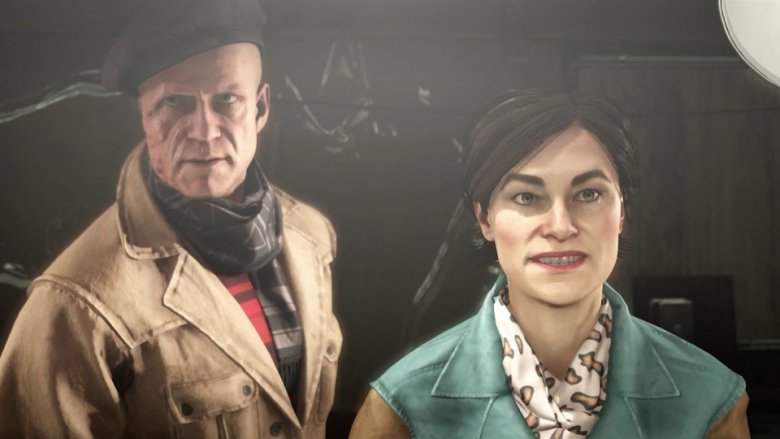
Now, many people have expressed distaste for our twin protagonists, and while I can’t say they’re my favorite, I don’t place the blame squarely on their characters. Since I have played the previous Wolfenstein game over the past few months, many of the characters are still fresh in my mind. From BJ and Fergus struggling with their own morality to the heart-wrenching deaths of J and Klaus, Wolfenstein I and II succeeded at making these mere pixels seem like complex and tragic characters. They were able to do this by expertly pacing themselves by exposing small pieces of characters in-between Nazi slaughter. Wolfenstein: Youngblood decided that none of this is worth doing. Our two leads are also given significantly less screen time as compared to BJ or Anya. After an opening cut scene with their parents and one of them killing their first Nazi, we are never shown any more character growth. Sure Wolfenstein: Youngblood tells us one of the twins wants to be a writer, but the series in the past has shown us small details like that. The telling rather than showing, makes the twins really hard to sympathize with.
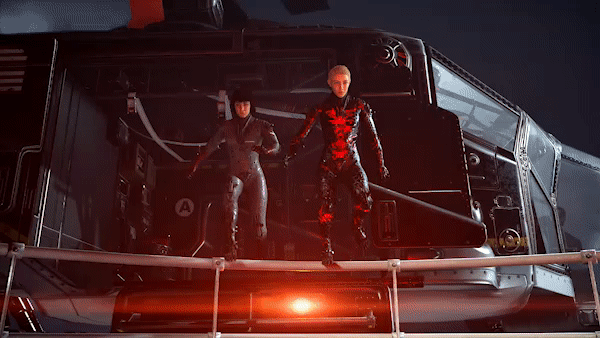
While some effort was made with the twins, no effort to develop the supporting characters was made. I adored hanging around the resistance headquarters in Wolfenstein I and II to see small character interactions, Wolfenstein: Youngblood’s resistance headquarters is so lifeless and stiff. Everyone stands around motionless, not interacting until you accept their quest like they are NPC’s in an MMO. Nobody has any character. Much like the twins being lacking in character when contrasted with their parents, this is all done by design, due to the live service nature of Wolfenstein: Youngblood. Since Bethesda is hoping you will continuously play this game, they knew achieving storytelling that would span over a live service’s lifetime would be impossible. As a result, they decided it was enough to call itself a Wolfenstein game without having to continuously design characters and settings comparable to the previous titles.
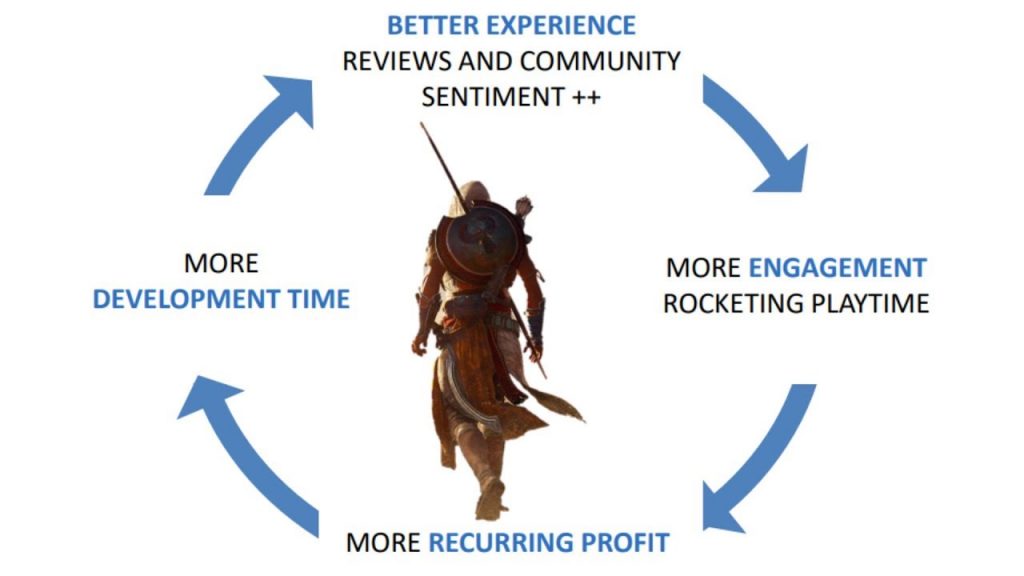
With the Resistance illustrating the path forward, one could easily assume that Wolfenstein: Youngblood would have tackled these bases in a linear fashion like the previous installment. An incorrect assumption as the leader of the Resistance hints that you might need some practice before taking the three bases. While there are levels in Wolfenstein: Youngblood they act as mere playgrounds for the Destiny 2 styled strike missions the game wants you to grind up. These missions could range from rescuing one of the pieces of wood the game claims is a member of the Resistance to find the key to access the Nazi base. One NPC will hand you daily and weekly mission as Bethesda hope you will be returning to this mess as you would return to your own jobs.
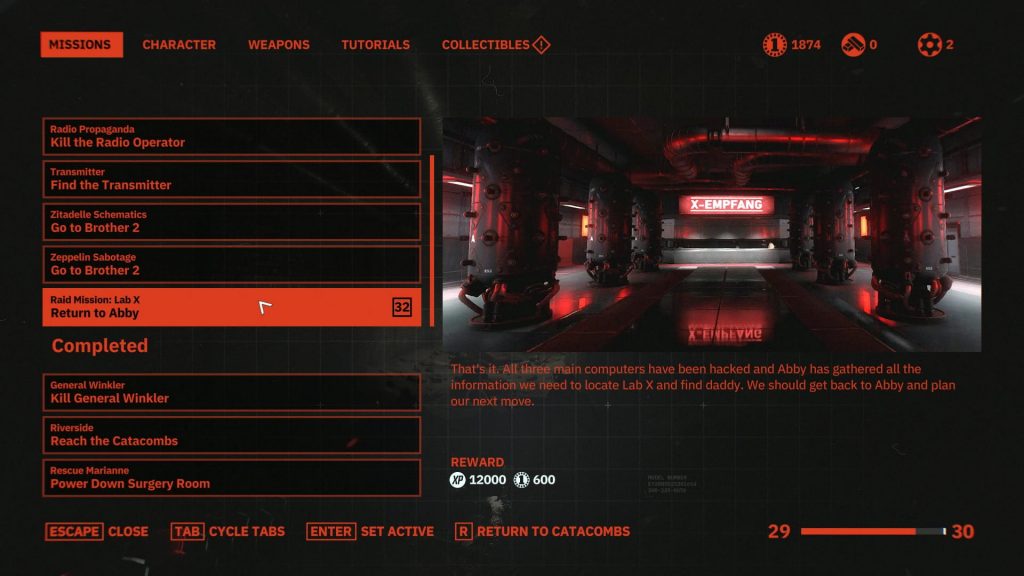
Quite frankly, I detest these mission styles because the constant tracing over the same levels makes the levels feel momentous. It is also easy to get lost during these strike missions. You aren’t given a proper map and have to navigate the levels with a compass-like mini-map in the corner. It is fairly common for this minimap to not showcase objectives because you are too far away from them. All this gets even worse with areas with multiple floor levels. While I do enjoy how much verticality the levels have, it makes navigating even more frustrating. To add insult to injury, you can often stumble into areas where Nazis are way above your level, because Wolfenstein: Youngblood has to have a token leveling system. These Nazis mow you down with a single shot. This leads to this fun exercise of getting shot down and getting back up to take one shot before getting knocked back down again. You try to run back to a previous section of the map and the Nazi you previously killed have all respawned leaving you stuck behind enemy’s lines. All in the name of the live service model.
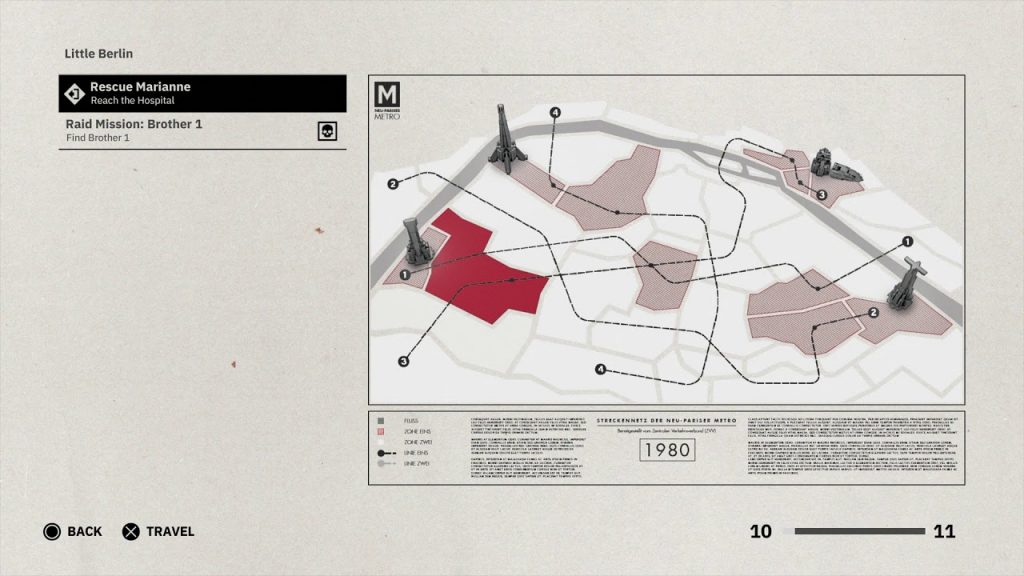
The guns have thankfully been copied over from Wolfenstein II with some caveats of course. For starters, you can only dual wield weapons when you unlock the special perks that allow you to, but even when you get the perk, you can only hold a pistol in your off-hand. Gone are the days of dual-wielding those powerful shotguns. Also, you can only hold pistols and a flashlight at the same time. DOOMSAYER, I hear you cry, since when did Wolfenstein require you to use a flashlight? I would say ever since they introduced pitch-black sewer tunnels that are impossible to see without the flashlight. Here we see developers MachineGames make the same mistake ID Software made with Doom 3 in 2004. IS THE GAMES INDUSTRY INCAPABLE OF LEARNING FROM THE PAST? While you might be tempted to venture without the flashlight, I highly discourage it as the Nazi dogs have been equipped with suicide vests that will instantly down you.
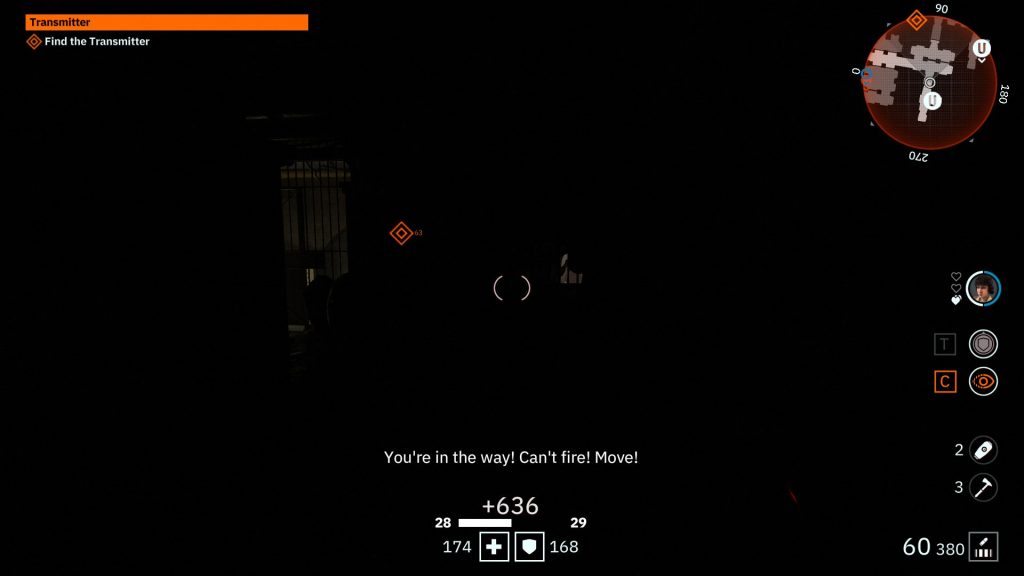
The suicide vest dogs are actually a good analogy for how obnoxious the enemy design has become. As stated earlier, over leveled Nazis can put you down with ease. For me, my annoyance stems from the armor system. Certain Nazis will have additional armor indicated by either bars or squares in front of their health bar. In order to remove this armor, you have to use a gun with corresponding bars or square markings. This makes most of the enemies feel even more bullet spongey than previous titles. I found enemies would just cut me down as I used the fiddly weapon wheel to get out the proper gun. I often got so frustrated plinking away at these brutes, I would just run up and empty my whole shotgun clip on them. While one could think this was designed to get you to try different guns, it is more likely a feature designed to railroad players into choosing a human partner over an AI partner.
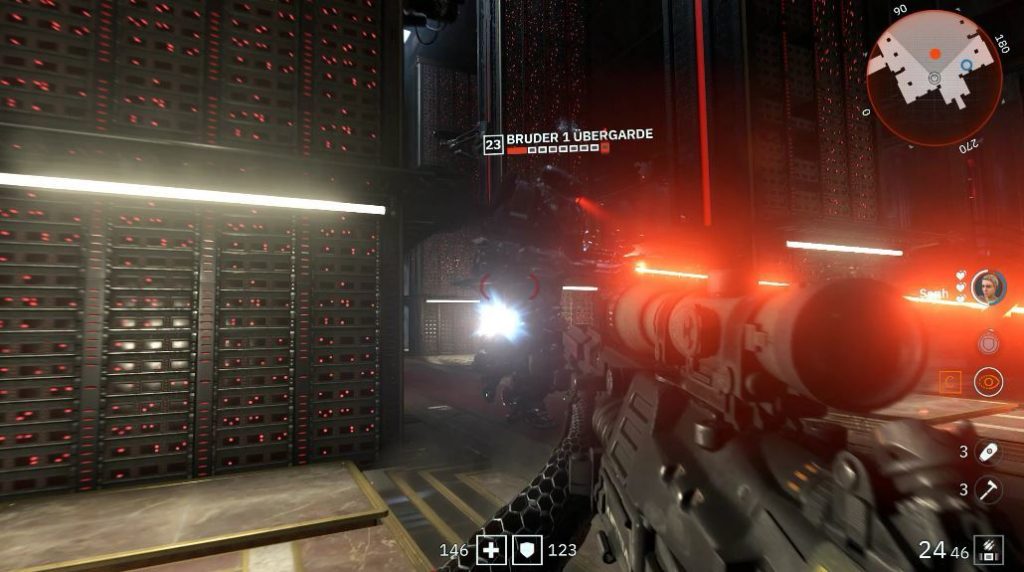
This would be the main difference between Dead Space 3 and Wolfenstein: Youngblood; while Dead Space 3 allows you to ditch the co-op partner to play solo, Wolfenstein: Youngblood is more than happy to nail a braindead AI partner to your ankles. I had heard the whispering of the AI partner being completely dysfunctional, but early on I didn’t notice. While I wasn’t watching how accurately she shot, I was regularly being revived when I went down. Sure sometimes she stops moving altogether, but that wasn’t the deal-breaker.

What solidified the notation that the AI in this co-op shooter was imbecilic was the boss fights. Numerous times during boss fights, my AI partner would attempt to run headfirst into bosses that we were clearly not supposed to fight up close. Frequently causing her to be downed right at the boss’s feet. I was given no choice. I had to venture into the gunfire to pick her up because Wolfenstein: Youngblood has a life system that you must share between the two of you. Lose all your lives and you might have to start the mission all over again. The breaking point for me was the second boss when my AI partner plinked away at the boss AFTER I HAD BEEN DOWNED AND CALLING FOR THEM TO REVIVE ME UNTIL I BLED OUT. SHE WILLFULLY IGNORED MY CALLS FOR HELP TO THE POINT WHERE I RETRIED THE BOSS OVER A DOZEN TIMES. Now I am not going to say the AI is deliberately broken to force you to play with a human. I will say it is pretty convenient the AI partner’s half-baked programming makes it more enticing to play with humans because the microtransactions hinge on player interaction.
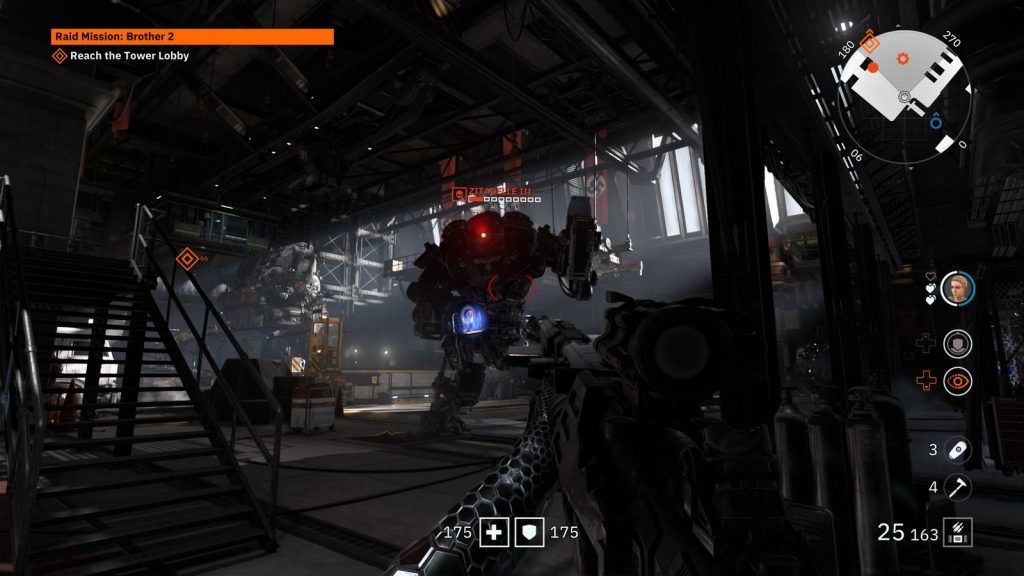
Throughout Wolfenstein: Youngblood you are able to acquire a currency known as Silver coins. You are able to use this currency to unlock gun upgrades, active buffs, and some skins for your suit and guns. Wolfenstein: Youngbloods also sells Nazi Gold Bars that can be used to unlock almost all of the skins. Most skins are able to be purchased with either the Silver coins or Nazi gold, but a handful of skins can only be purchased with Nazi gold. Frankly, I find these skins ridiculous as you will never be able to see them through the game’s first-person view. You are only able to see the skins your co-op partner has purchased. Creating the haves and have not model that publishers have used to push cosmetic microtransactions over the years.
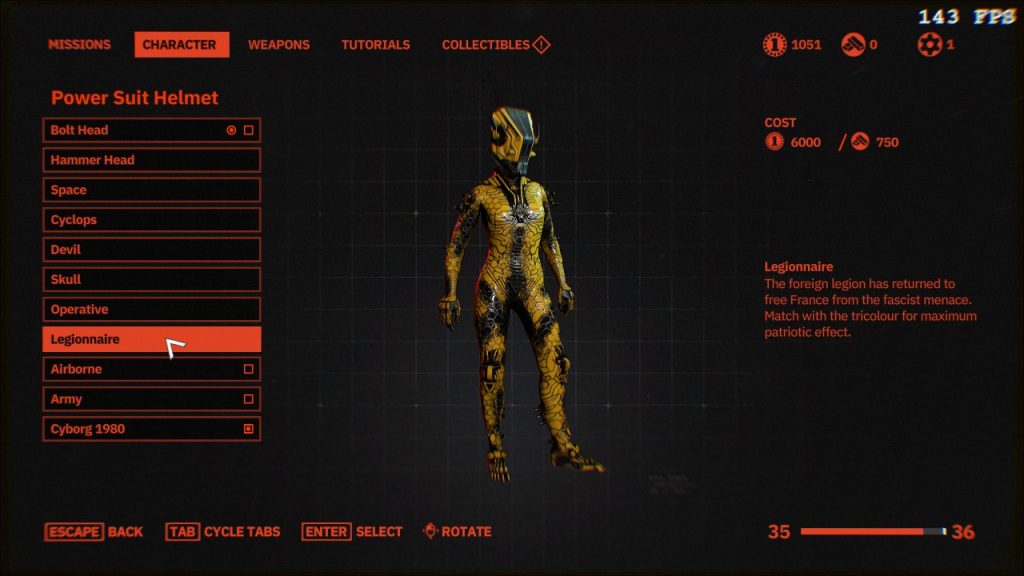
Bethesda wants you to play with other people so you can see other people parading around in these skins and be tempted to buy them. While most skins can be purchased with the in-game currency, nothing is stopping Bethesda from snapping their fingers and railroading you into purchasing the Nazi gold. While all these skins are optional, I have realized from my time with Marvel’s Spider-Man that I enjoy collecting skins. I find checking off another costume in my collection list satisfying, and it feels egregious to try to make money off that sensation. It feels especially insidious when you take a traditionally single-player title and stitch it together around this rotten spine known as live services just to milk players who enjoy collecting skins. Wolfenstein is not about repeating missions or saving up for cosmetics, it is about human characters fighting a force that may be too great to ever overcome. Much like my fight against the video game industry being turned into glorified slot machines. Feels wrong to watch this series dip its toe into the dark water that juxtaposes past themes.
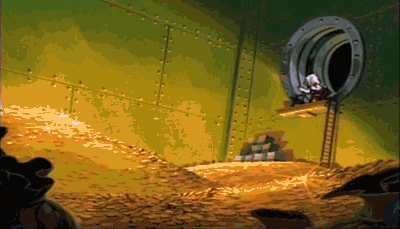
I am willing to concede that notation that Wolfenstein: Youngblood is at best an inoffensive co-op shooter, but I am more concerned about the dark path Bethesda has been walking. With Elder Scrolls V: Skyrim, Fallout 3, and Doom, Bethesda had been a champion of single-player experiences. Lately, their output has hinted that they are doubling down on the live services model. While I do believe live services can provide great experiences if done right, Bethesda has been clearly crafting them to milk their fan-based dry. Wolfenstein: Youngblood twisted and contorted it the attempt to marry co-op to a single-player shooter, and Fallout 76 has introduced more grind in the attempt to sell players the time-saver solutions. All of this has me stressed about Starfield. On edge for Elder Scrolls VI. Downright dreading what is in store for Doom Eternal. MY LOYAL FOLLOWERS, Bethesda is on noticed. I have tried to warn them through my ranting and raving, but if they cannot force them to see the errors of their ways, I don’t see much hope for them. If they continue with this live service obsession then so be it. All I can say is the end of Bethesda will be nigh.

